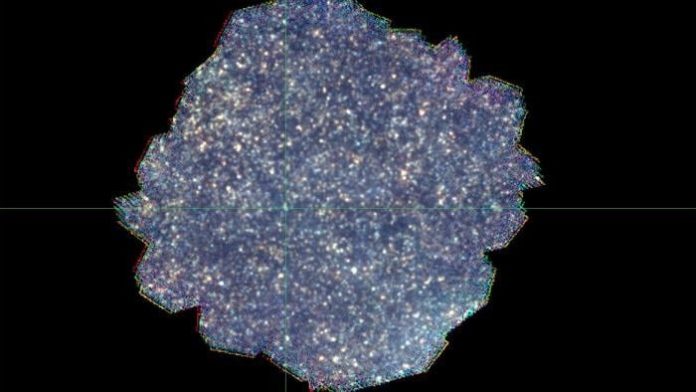
A team of astronomers have discovered what appears to be a previously undetected population of “hidden” galaxies that could challenge existing models of galactic evolution.
If confirmed, these galaxies would not only contradict current scientific understanding about the development and distribution of galaxies, but it would also potentially solve an energy mystery by accounting for the missing infrared radiation in the Universe’s so called energy budget, effectively completing our understanding of energy emission at longer wavelengths.
The researchers led by the Science and Technology Facilities Council the Rutherford Appleton Laboratory and Imperial College London have created the deepest image ever of the Universe at far infrared wavelengths.
They used the Herschel Space Telescope to revealing possible evidence of hidden galaxies among nearly 2,000 distant ones detected.
The lead author, Dr. Chris Pearson explained that this work pushed Herschel Space Observatory science to its limit, potentially uncovering a new population of galaxies contributing to the faintest observable light in the Universe.
“This work has pushed the science with Herschel to its absolute limit, probing far below what we can normally discernibly see and potentially revealing a completely new population of galaxies that are contributing to the very faintest light we can observe in the universe.” – Dr. Chris Pearson from STFC RAL Space
The team achieved this breakthrough by stacking 141 images from the SPIRE instrument aboard the European Space Agency’s Herschel Space Observatory, which operated from 2009 to 2013.
The resultant image was the deepest far infrared sky image ever produced (five times deeper than any previous single Herschel observation and at least twice as deep as any other area observed by the telescope.)
This technique allowed astronomers to identify the dustiest galaxies where star formation predominantly occurs, while also enabling them to analyze how galaxy numbers vary with brightness. Doing this allowed them to calculate each galaxy’s contribution to the Universe’s total energy budget.
The incredible depth of the image caused galaxies to merge and become indistinguishable, prompting MIT PhD student Thomas Varnish to apply statistical analysis techniques to the areas that were most blurry.
He discovered possible evidence of previously unknown faint galaxies hidden in the image blur that conventional analysis couldn’t detect. If confirmed, these galaxies would fundamentally challenge all existing models of galactic numbers and evolution.
Further research is now required to confirm the new galaxy group using other wavelength based telescopes to understand more about these faint objects.
Dr. Pearson noted that conventional telescopes reveal only half the Universe’s story, as much starlight is absorbed by dust and re-emitted as infrared radiation.
While Herschel Space Observatory’s archived data remains valuable a decade after its mission ended, Dr. Clements emphasised that further investigation with the PRIMA mission (a 1.8-meter infrared telescope being considered by NASA with UK consortium support) that would bridge observational gaps between existing instruments and bring clarity to the debate.
Written by Mark Thompson/Universe Today.



